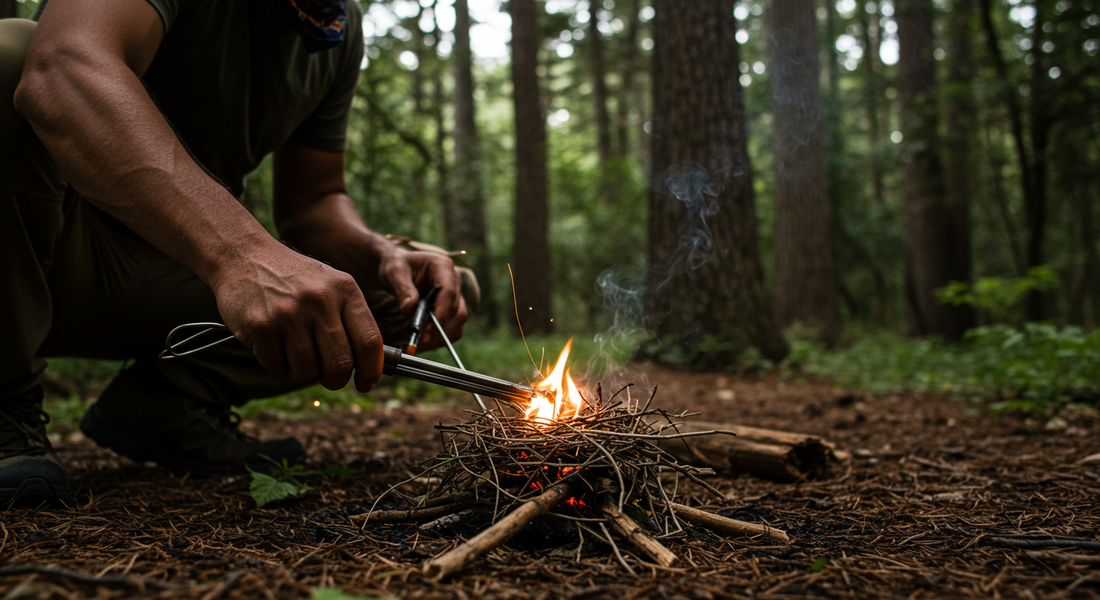
Survival Gear for the Outdoors: Essential Tools for Every Adventure
Share
Introduction
The beauty of the outdoors lies in its unpredictability. Whether you’re camping in the mountains, hiking through dense forests, or backpacking across remote trails, the wilderness demands respect. The difference between a minor inconvenience and a serious emergency often comes down to preparation. That’s why packing the right survival gear for the outdoors is non-negotiable.
At Packstead, we know that outdoor enthusiasts need reliable, lightweight, and durable tools to stay safe while enjoying their adventures. Here’s a guide to the essential survival gear every camper, hiker, or backpacker should carry.
1. Multi-Tools: Versatility in Your Pocket
A high-quality multi-tool is perhaps the most versatile piece of survival equipment. Equipped with knives, screwdrivers, pliers, and scissors, it can handle everything from repairing gear to preparing food. Compact and lightweight, it saves space while offering multiple functions in one device.
2. Fire Starters: Reliable Warmth and Safety
Fire is a cornerstone of survival—it provides warmth, light, and a way to cook food. Matches and lighters are useful, but they’re not always reliable in wet or windy conditions. Magnesium fire starters, waterproof matches, or flint-and-steel kits ensure that you can build a fire even when the weather is working against you.
3. First Aid Kits: Prepared for the Unexpected
Accidents happen, even on well-planned trips. A first-aid kit stocked with bandages, antiseptics, pain relievers, and blister treatments can make all the difference. Tailor your kit to the length and location of your trip—remote hikes may require more advanced supplies like splints or water purification tablets.
4. Water Filtration Systems: Staying Hydrated Safely
Access to clean water is critical. Carrying enough for long trips isn’t always practical, making a water filtration system essential. Portable filters, purification tablets, or UV sterilizers allow you to safely drink from streams or lakes, reducing the risk of waterborne illness.
5. Navigation Tools: Finding Your Way
While smartphones and GPS devices are helpful, batteries can die and signals can fail. Always carry a map and compass as backup navigation tools. Knowing how to use them is just as important as packing them—practice basic navigation skills before your trip.
6. Shelter Solutions: Protection Against the Elements
Even if you don’t plan an overnight stay, unexpected weather or injury may keep you outdoors longer than expected. Lightweight emergency blankets, bivvy sacks, or compact tarps provide shelter and protection from wind, rain, and cold.
7. Lighting Equipment: Illuminating the Path
A durable headlamp or outdoor lantern ensures visibility after dark. Look for rechargeable models with adjustable brightness settings. Carrying spare batteries or a solar-powered backup keeps you prepared for extended stays.
8. Communication Devices: Staying Connected
In remote areas, cell signals may not reach. Two-way radios or satellite messengers allow you to send SOS alerts or stay in contact with companions. These tools provide peace of mind in case of emergencies.
Conclusion
The wilderness is both breathtaking and unpredictable. Equipping yourself with essential survival gear—multi-tools, fire starters, first-aid kits, water filtration systems, and navigation tools—ensures that you’re ready for the unexpected. Preparedness not only enhances safety but also gives you the confidence to fully embrace your outdoor experiences.
At Packstead, we curate survival gear designed to be practical, durable, and lightweight—so every adventure is both safe and unforgettable. Because when it comes to the outdoors, being ready is the ultimate freedom.
